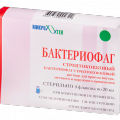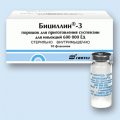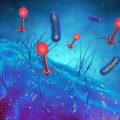Ureaplasma - one of the diseases of the urogenital system of the human body, which is caused by Gram-negative microbes.

Gram they are called in reaction to the Gram stain. This method allows us to differentiate bacteria on the structure of their walls. Gram-positive bacteria take color and turn blue. The color change is strong, followed by washing does not change the color of their new.
gram-negative bacteria, although change color, but when flushing discolor, indicating that the greater the strength and density of the cell membrane. Such bacteria are resistant to the antibodies, produced by the body, presence in their structure components, causing inflammation, making them particularly pathogenic. If the number of these microorganisms starts to exceed the rate, manifested symptoms of inflammation.
Disease, which provoke these bacteria, It called ureaplasmosis, but in its pure form, it is quite rare. This diagnosis can be put only in the event, when only a ureaplasma detected in inflammation, without inclusions of other microorganisms.
What is it and why there is disease
In most cases the disease affects women. Besides, they are often carriers of the disease, who do not show any symptoms of the infection of their own. Ureaplasma in women is often found in the natural microflora of the vagina in an inactive state, that is, a woman with the healthy. In men, the microorganism can reside peacefully in the urethra.
This suggests, In some cases, the disease does not occur when you transfer media from a microorganism, and the formation conditions, enabling to activate the bacteria and the onset of disease. This is the opinion of many specialists, which quite convincingly answer the question, where does ureaplasma in healthy women.

Here are some reasons to increase the probability of occurrence of disease:
- the body condition, wherein suffers immunity:
- chronic illness
- stress
- supercooling
- period after surgery
- endocrine disorders
- poor quality of life
- disregard hygiene rules
- bad food
- chronic fatigue
- up to age 30 years old
- sex life too young
- sexually promiscuous
- unprotected sex
- penchant for unconventional forms of sexual intercourse
- pregnancy
- presence of diseases, caused by other pathogens (chlamydia, gardrnerellez, Trichomonas fetus, herpes etc.)
- dysbiosis
- long courses of antibiotics without proper measures to restore the microflora
- malnutrition, constant fatigue
The main route of penetration into the body ureaplasma - sexual contact, however the infection can get into the body and at home, via common carrier to hygiene items and household.
Sometimes the infection occurs during the prenatal period, from carrier mothers.
How does the disease
If the infection enters the body for the first time, there may be a relatively long incubation period, to 3-5 weeks, the exact duration is not set. After that, there are signs of infection ureaplazmozom, which are rather blurry character, so diagnosis requires
- repeated studies.
- pain urination, rezyu and burning
- pain in the abdomen scattered nature, preferably in the lower part
- discomfort during intercourse
- colorless allocation, not intense
- a slight increase of body temperature.
If getting ureaplasmas happened oral route (eg, after oral sex), In addition to these symptoms may start to hurt his throat and there are signs of, similar to angina. That is, a woman will treat throat, without touching the real cause of the disease.
Ureaplasma if not treated immediately, After a month and a half, it becomes chronic, while symptoms are blurred, even may disappear. Ureaplasmosis women in this form can be found in the course of intensive treatment of recurrent thrush.
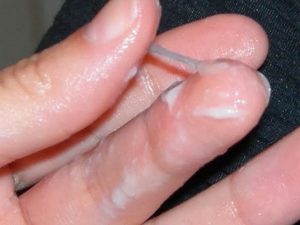
Analyzes on a ureaplasma in women
Staging such a diagnosis as a ureaplasmosis requires several studies, and only on the basis of the results it can be concluded.
For accurate diagnosis conducted:
- immunofluorescence (study using dye, that glows under ultraviolet light)
- linked immunosorbent assay (similar to the previous, but instead of the dye used enzyme)
- serological blood test (study, allowing to detect the presence of viruses in the blood)
- microbiological
- other studies.
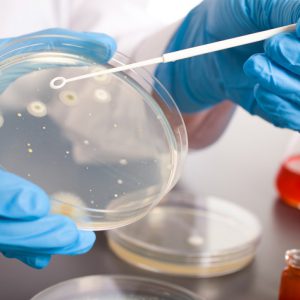
How to treat a ureaplasma
The main treatment for the disease - the use of antibiotics, capable of producing action on gram-negative microorganisms.
For the treatment of the disease, caused by this organism, are not suitable for all antibiotics. Absolutely harmless to the penicillins and cephalosporins ureaplasmas.
The physician may prescribe antibiotics following groups:
- macrolides (sumamed, erythromycin)
- tetratsiklinы (tetracycline, doxycycline)
- lincosamides (lincomycin).
Depending on the condition of the female organism and some other factors, the doctor will recommend a course system (tablets reception, capsules) or local treatment (applying vaginal and rectal suppositories). Treatment is carried out on an outpatient basis, at home.
Scheme systemic treatment, besides the main product, acting on microorganism pathogen, It includes:
- vitamin complexes for immunity, with minerals and essential trace elements
- facilities, soderzhashtie bifidobacteria- and lactobacilli, for restoring and maintaining intestinal and vaginal microflora
- diet, excluding acute, greasy, roast, smoked. Under the ban is also alcohol - antibiotics for the most part are not compatible with alcohol, may begin the human liver works
- in parallel with anti-bacterial drugs antifungal drugs may be prescribed.
Besides, doctor may advise to refrain from intimate contact during the treatment period, it is about 3 weeks.

Treatment without drugs
Local treatment of ureaplasma in women - more sparing scheme, is the use of vaginal and rectal suppositories.
The most used drugs - "Genferon" and "Gensikon".
Genferon '
effective candles, It has a pronounced anti-viral and anti-bacterial action, support the immune system, not only local, but also the general, the whole body.
Suppozitorii, due to its composition:
- successfully docked inflammation
- disrupt vital functions in cells of bacteria,
- support the functionality of the affected cells
- relieve symptoms (pain, mulligrubs, burning).
The course of treatment with this drug - 10 days in the case of an acute form. If the disease has already dragged on, duration of therapy can be increased.
The drug is relatively harmless, it can be administered to pregnant women, starting from the second trimester. However, to make a decision about its use can only be a doctor, especially in the treatment of women, expecting a baby.
"Hexicon"
These suppositories contain antiseptic agent hlorgeksina digluconate. The drug is quickly and effectively destroys a ureaplasma, wherein the natural vaginal flora is not violated. With the help of this drug poisoning can be cured in a week, candle is inserted in the vagina once daily.
The agent can be administered to pregnant women as a, and lactating mothers.
Despite the availability of information on, how to treat a ureaplasma in women, do not do it yourself. In studies before diagnosis may reveal other microorganisms, lingering inflammation, especially if the first stage of the disease went unnoticed. Only after identifying the form of the disease and its agents may be administered an effective treatment.



